How to Weld Thin Metal: A Step-By-Step Guide (2024)
Last Updated on
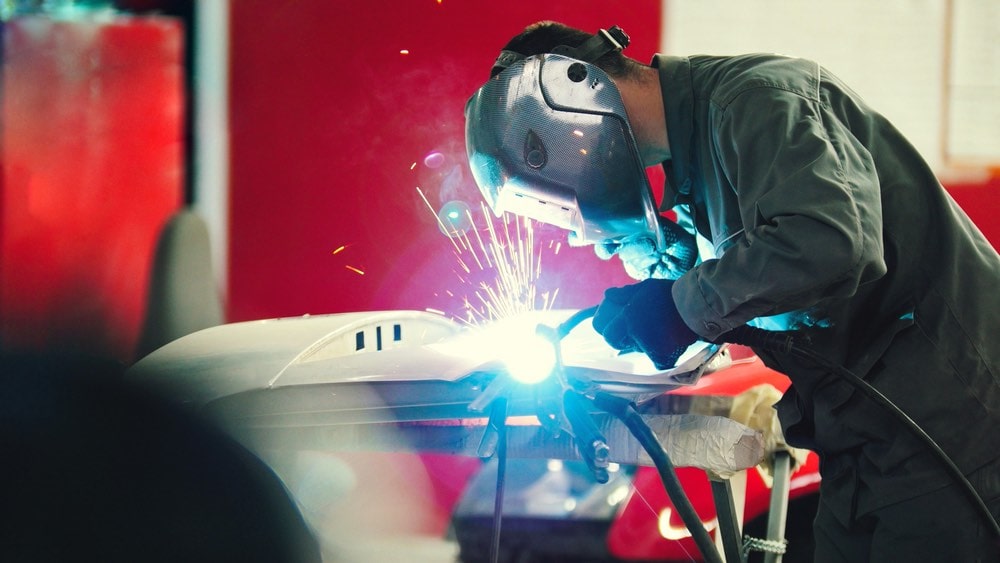
Working using thinner metal sheets is complicated. Excess heat may lead to burnout. Less heat causes insufficient weld penetration and generates brittle joints. The welding procedure you select plays a crucial role in the process’s success.
There are several things to keep in mind to make sure that you have a fruitful joint if you’ll be working using slim metal. Most expert welders suggest the arc welding method when it comes to connecting slim-gauge metals.
Nonetheless, you can overcome the challenges of connecting thin materials using a couple of welding procedures. If you would like to know how to weld slim metal, then keep reading to learn more. First, let’s look at a few things you should keep in mind.
Lessening Burn Out
A burnout takes place if the melted weld pool caves in and separates from the workpiece. The outcome is a big hole rather than an ideal joint. The fault takes place because of high-temperature outputs, which are unbearable to work with. If this happens, then the welder has to begin all over again with a fresh workpiece.
The Appearance of the Weld Bead
Since you have to use lower heat input due to the slim-gauge metals, the weld bead’s appearance may generate a higher amount of spatter. As a welder, you’ll come across this issue if you’re working with stainless steel filler metals.
The Angle of the Torch
Where you’ll place the torch considerably impacts the amount of energy conveyance. When determining the working angle and travel velocity, you have to take into account the characteristics of the metal and its melting point.
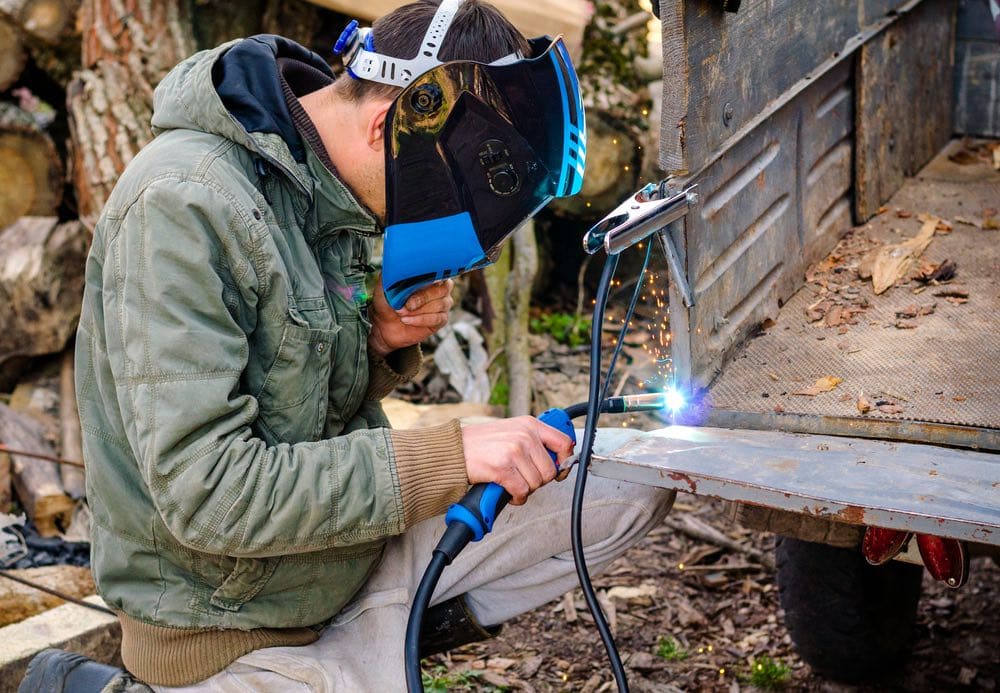
All these factors will influence the amount of energy the metal is predisposed to at one time. Either it can increase or lessen the dangers associated with burnout.
Shielding Gas
Your gas selection considerably influences the rate of productivity of the welding procedure. If it doesn’t convey energy efficiently the way it should, it can generate weak joints.
It generates a considerable amount of spatter if it has unbelievably high conveyance rates of energy. With this, you risk blowing through the material.
How Do You Use MIG Welders to Weld Thin Metal?
Adjust the Weld Style
With the SCT (Short-Circuit Transfer) model for slim-gauge metals, you can produce perfect weld seams, even for thin metals. The SCT also lessens the contortion of welds above the joint. Additionally, it reduces the appearance of burnouts (melted metal puddles).
It involves the conveyance of low heat. However, several MIG machines are equipped with preset modes when it comes to pulse-on-pulse and pulse-on-short-circuit conveyance. It’s a feature that you can program and selects distinct weld conditions.
A Shielding Gas
A protective gas is critical as it ascertains the appearance of the bead. Select shielding gases that have higher argon concentration for Shot-Circuit Transfer welding parameters. A 25% Carbon Dioxide and 75% Argon gas mixture is the best bet.
There’ll be fewer spatters in your weld because argon conveys minimal heat as compared to carbon dioxide. Anode positive or reverse polarity is suitable if you want to weld solid wires using thin parent metal sheets.
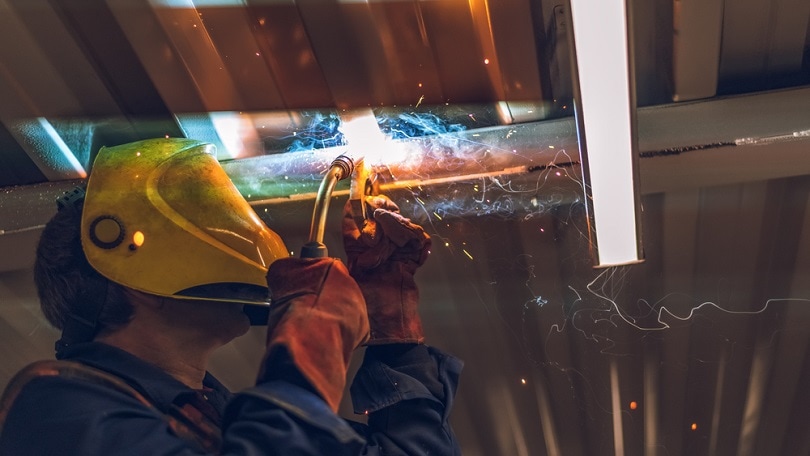
Selection of Filler Metals
Utilize filler metals (wires) that are slimmer as compared to reedy sheet metal. Numerous welders utilize 0.023-inch diameter wires and 0.024 inches for slimmer sheet metals. 18-gauge metals such as stainless steel have wire diameters of 0.030 and 0.034 inches.
The Angle of the Torch
Align your torch angle to stop burnout in the SCT model. Irrespective of the position of welding (overhead, horizontal, and level), ensure that the distance between the short-contact tip and the workpiece. If there’s quite a distance between the contact tips and the metal pieces, it’ll generate an unstable arc.
- If you have the expertise, it’s easy to operate the MIG welding gun.
- The trigger of the welding gun is equipped with the start and stop regulation feature.
- MIG welds are aesthetically-charming.
- If you want to weld sculptures using thin metal sheets, MIG welding is the perfect approach.
- It has a limited scope of application.
- MIG welders may not be the best choice if the parent metal is excessively thick or slim.
- They generate heat that’s too potent for reedy aluminum materials. However, it’s feeble when it comes to cast iron.
- If you’re in damp and windy surroundings, then the MIG welding approach isn’t the perfect option.
You can utilize an ordinary MIG welding approach depending on the type of weld and sheet size. Alternatively, you can combine it with the pulsing technique to shun a blow through.
The Pulsing Technique
In this approach, heat a small plates’ segment you want to connect and then let the weld pool cool completely. Don’t try to fill in the joint all at once. Doing so forms a hole in the workpiece.
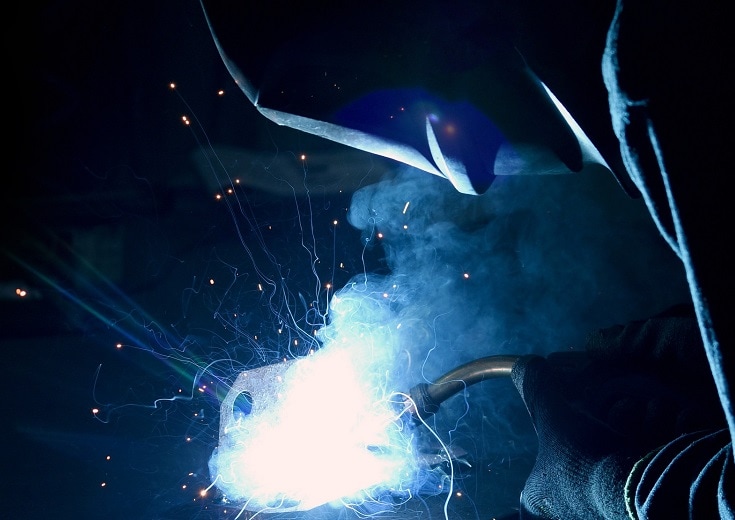
This procedure has a high penetration of materials and metal deposition. And because there’s intense exposure to energy in this welding technique, you have to be extra cautious if you’re working with brittle material.
In the process, ensure that you constantly use the shortest diameter of the wire. It’s supposed to minimize the risks involved as it uses less heat to melt. It restricts the amount of heat conveyance to the parent metal.
One reason why this welding technique is commonly used when dealing with thin metal sheets is that you can regulate the energy output. Also, it permits enhanced control on the appearance of the weld bead. This way, it’ll be easier to repair errors that may come up due to a lower rate of deposition.
How Do You Use TIG Welders to Weld Reedy Metal Sheets?
Dissimilar to the MIG welding procedure, the TIG welding approach provides pure and potent weld seams. This welding approach is perfect for welding metals with a thickness of more than six millimeters.
Nonetheless, before you use it to weld slimmer metal sheets, you need to adjust the TIG machine to the ideal settings.
Apply a Suitable Power Setting and the Correct Foot Pedal
TIG machines come with foot pedals under normal conditions. The pedal regulates the heat output from your welding machine. If you use smaller anodes with a lower power setting, you’ll easily stop burnout.
Select the Right Filler Metal
0.020 and 0.040 inches thoriated tungsten anodes and 1/16 inches ceriated tungsten are the best if you want to concentrate the arc on reedy metals. Nonetheless, ordinary TIG welders utilize acuminated anodes that provide a lot of arc control.
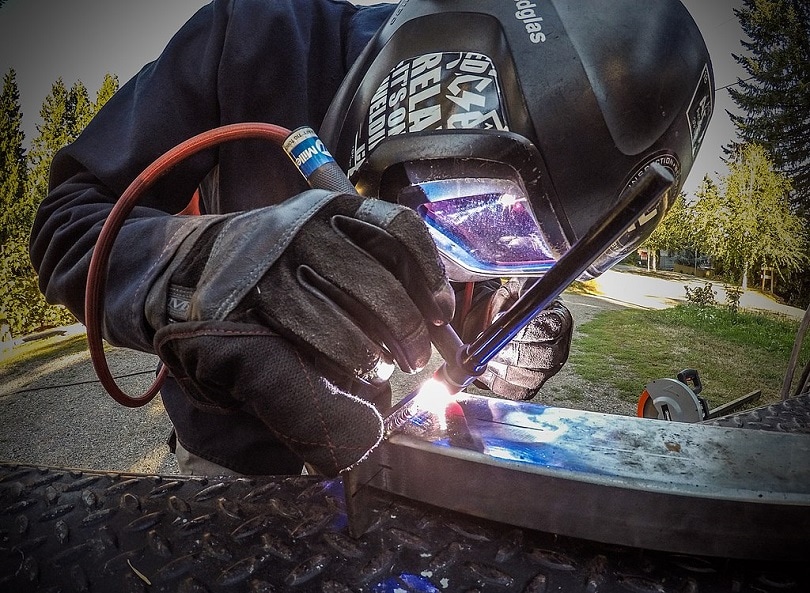
They assist in concentrating the arc at weld joints precisely. When manufacturing metals using slender sheets, it’s crucial to lessen contortion by using suitable filler metals. If you’re TIG welding steel metals using thin sheets, concentrate the tungsten at the weld seam. Then, grind it at an angle parallel to the length.
Some Basic Approaches Used by TIG Welders
Typically, if you whip or weave the torch, it’ll cause warping or burnout. If the arc concentrates on a particular area, it generates more heat on the parent metal. If you’re utilizing a TIG gun, make sure that there’s a straight line of conveyance with the fastest velocity.
If there’s uneven heat distribution, it leads to contortion and warping of weld seams. To avoid contortions, utilize the skip welding approach to apply a sequence of stitch welds.
How Should You Weld Thin Metal in TIG Welding?
Although you can weld thin metal in a wide array of positions, it’s easy to weld downhill fast with adequate control. Welding reedy metal allows you to move at a somewhat constant travel velocity with little effort.
It’s excellent for TIG welders who are less experienced. Ensure that you maintain a tight arc and the puddle moving nice and even. Weld at a somewhat lower amperage if you want to weld uphill.
- It produces fine weld seams on reedy metals and lessens the likelihood of spatter.
- It’s the ideal choice for professionals who would like to weld with accuracy.
- You can weld both slim-gauge aluminum and steel materials easily if you use the tungsten stick.
- The TIG welding technique can only be applied by professional welders.
- This welding mode utilizes a much steeper learning curve.
- As compared to the MIG welding technique, novices take longer to learn the TIG machine. Therefore, newbie welders should begin with the MIG welding machine (or hybrid devices) before attaining the TIG welding expertise.
You can use TIG on a variety of materials. It works exceptionally well on nearly all materials. According to the joint and what’s required, you can put together TIG with any of the below welding approaches.
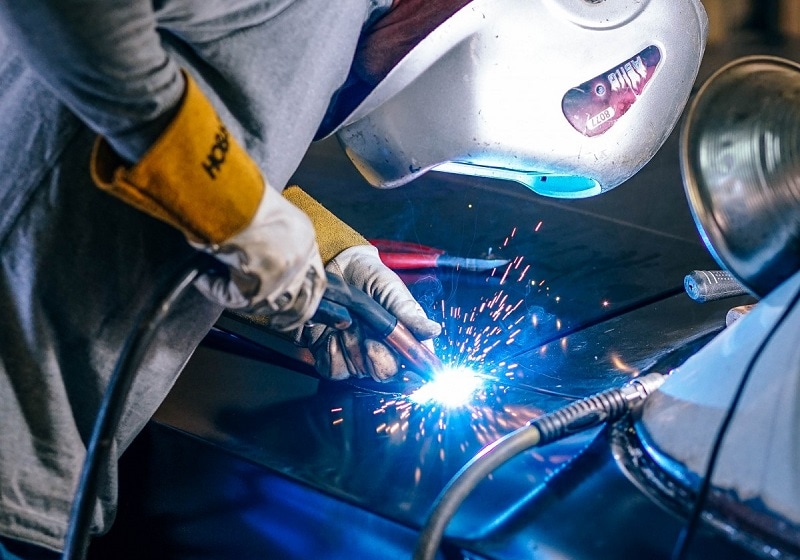
Skip Welding
You’re lessening warping and the irregular appearance of the weld bead by producing smaller spasmodic stitch-like joints. In this welding approach, split the joint into two equal parts. Make sure that the energy is directed towards other sections.
You lessen the amount of energy every section is predisposed to at one time through skip welding. By doing this, you’ll be lessening the risk of joint failure. It leads to a tidy-looking joint, which is also long-lasting.
Support Rods
Affix the workpiece to chilly bars to reduce the risk of burning the sheet. Once you heat them from the front, the support bars cool them from the rear. It lessens the risk of damaging the weld joint, by controlling the heat output.
Joint and Fit-Up Design
Making joints in slimmer sheets is hard. You have to make sure that they’re tight-fitting together because even the smallest holes are considered as burnouts and form a feeble joint. To stop that, ensure that the two metals correspond with each other before you start welding.
With slimmer metal sheets, there’s no room for mistakes. It’s because you cannot divert a lot of material in a place. The basic rule is to take the dimensions twice and cut once. If you can handle that, then you don’t run the risk of damaging the joint.
How Do You Use a Stick Welder to Weld Thin Metal?
The other name for the stick welding procedure is SMAW (Shielded Metal Arc Welding). This welding technique is older as compared to other types. However, it’s an easy procedure that guarantees you potent welds.

If you’re using stick welding, the anode gets sultry and melts the workpiece into a fusion. It’s a special consumable stick that has flux coverings. The flux material helps lessen the danger of pollution by making a shield around weld seams.
Nonetheless, most professional welders don’t utilize stick welding as the procedure produces too much heat on reedy materials. The likelihood of burnout is high. SMAW is also an approach in which the weld joint is left with a slag.
What’s the Best Method of Welding Thin Metal?
When it comes to welding slimmer metal sheets, MIG and TIG are the best option. The two work perfectly on nearly all material types. Nonetheless, if your aluminum or stainless steel metal sheets are too thin, we recommend that you use the TIG technique. It’s because it gives you enhanced control over the heat output.
MIG welding is significantly cozier to use. Most people use automated robots to carry out the task. However, MIG welding isn’t fit if you have friable sheets.
Select Your Ideal Method of Welding Thin Metal
Welding reedy metal shouldn’t frighten you. It’s just one more part of the task that you should learn to master and develop your expertise. Not every one of us begins welding each metal type flawlessly every time.
Welding requires practice, expertise, and concentration to perform it well. Also, some materials are much more difficult to weld as compared to others.
Don’t forget to take your time and use the tips we’ve provided above on how to weld thin metal. Errors occur. However, these tips will make you more fruitful if you give the task at hand the attention it requires.
Featured Image: Studio 72, Shutterstock
